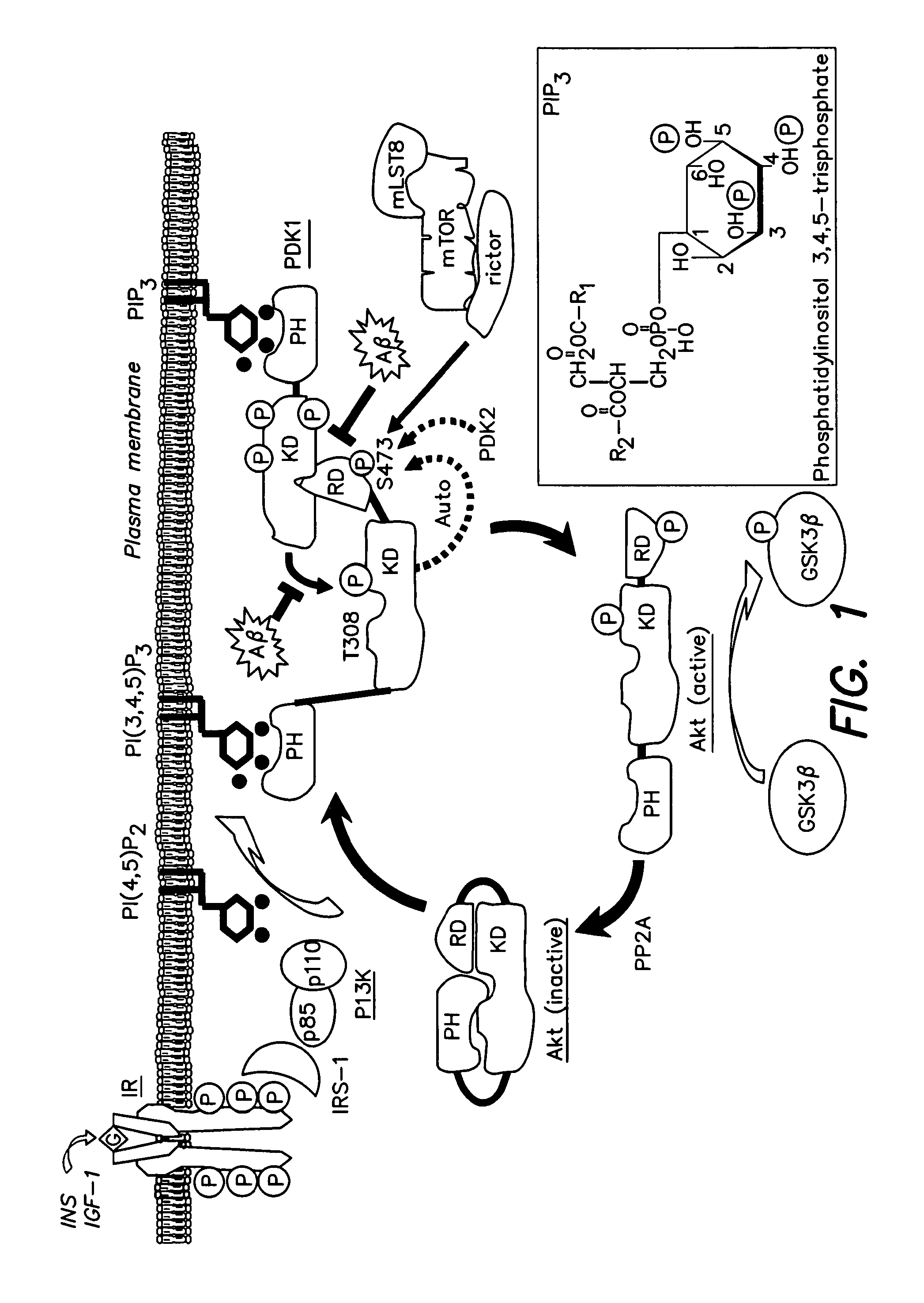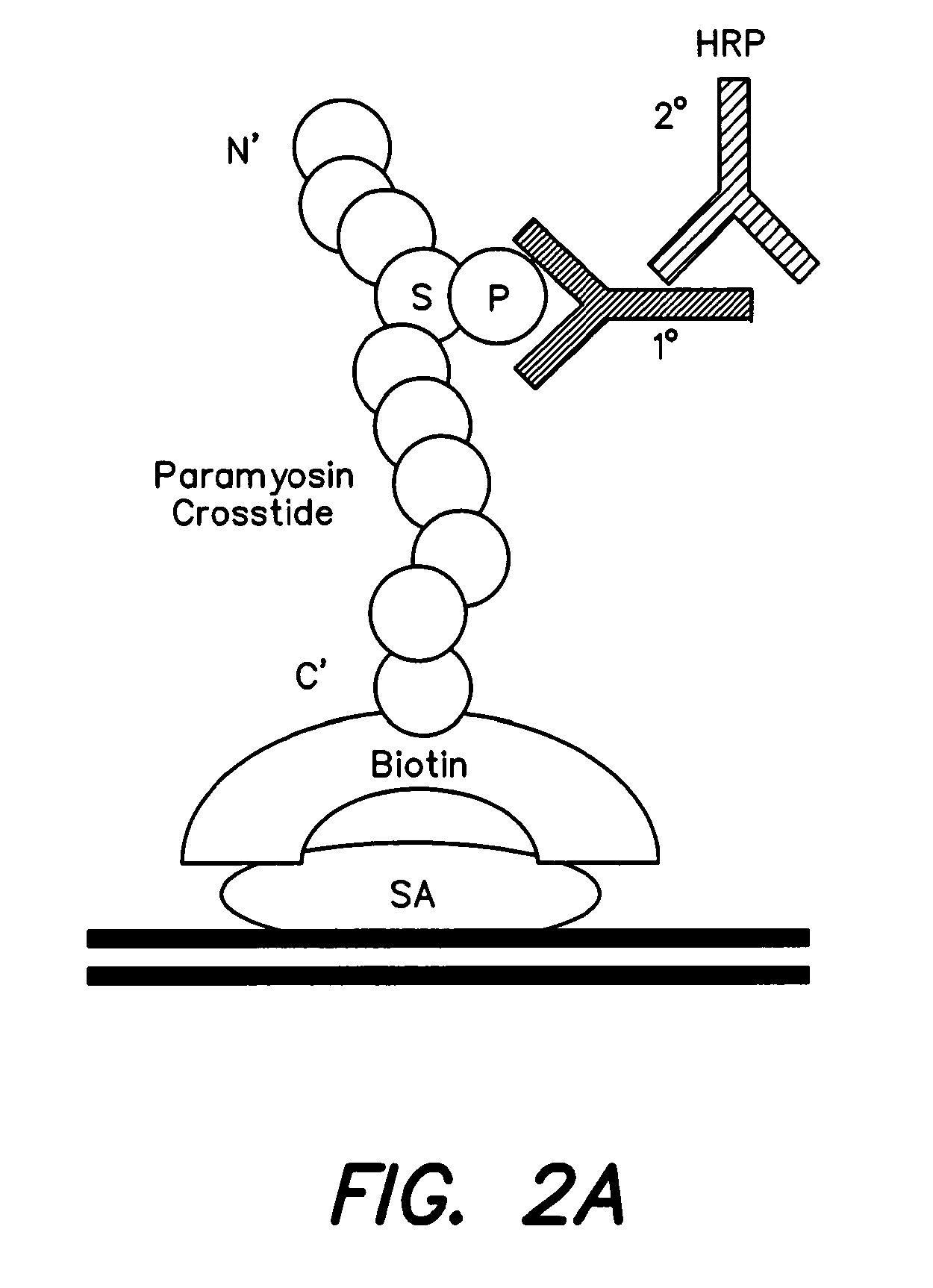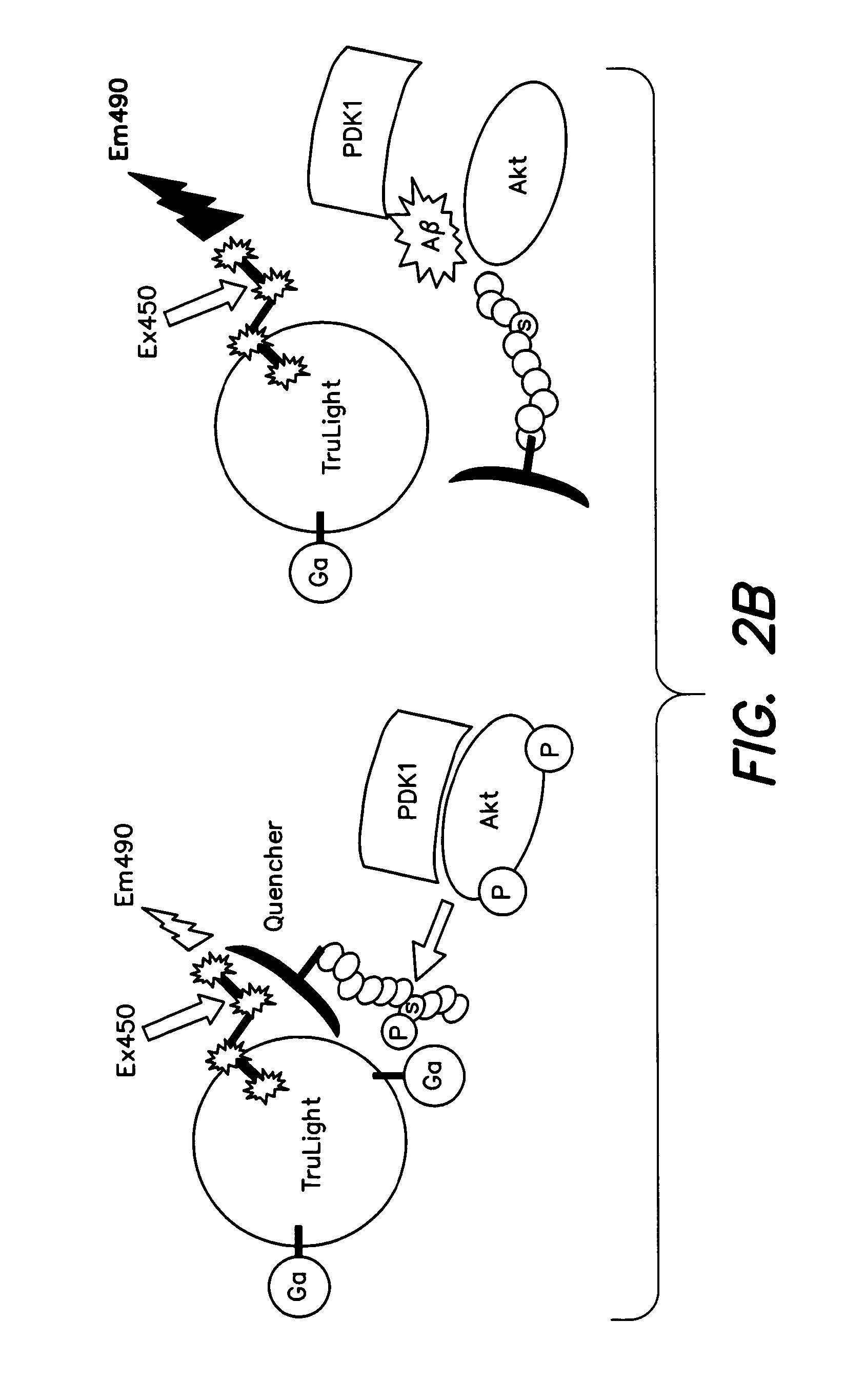Methods and compositions for treating alzheimer's disease
a technology for alzheimer's and compositions, applied in the field of methods and compositions for treating alzheimer's disease, can solve problems such as negative consequences of chronic insulin stimulation
- Summary
- Abstract
- Description
- Claims
- Application Information
AI Technical Summary
Benefits of technology
Problems solved by technology
Method used
Image
Examples
example 1
Experimental Procedures
[0136]Human Brain Samples
[0137]Rapidly frozen control and Braak stage II human brain samples from temporal or frontal cortex were generously provided by the Harvard Brain Tissue Resource Center, McLean Hospital (Belmont, Mass.). Postmortem intervals ranged from 5 to 10 hours.
[0138]Cell Culture and Reagents
[0139]Mouse C2C12 cells (American Type Culture Collection, Manassas, Va.; CRL-1772) were grown in Dulbecco's modified Eagle medium (DMEM), 20% fetal bovine serum (FBS) (Invitrogen, Carlsbad, Calif.), and maintained for passage at or below 60% confluence. To induce differentiation, cultures that had reached greater than 90% confluence were switched to differentiation medium (DM) consisting of DMEM, 2% adult horse serum. Neuronal-like SH-SY5Y, HEK-293, and NIH / 3T3 cells were grown in DMEM, 10% FBS, and maintained for passage at or below 80% confluence. However, it should be appreciated that other cell lines may be used (e.g., PC12 cells, N2A cells, primary cort...
example 2
Akt Deactivation and PDK-Akt Dissociation in AD Brain
[0160]Levels of Akt phosphorylation, indicating activation, Akt activity itself and the degree to which a kinase partly responsible for Akt activation (Thr308 phosphorylation, PDK1), is physically associated with Akt in human AD brain, were determined. In the AD brain, p-Akt (Thr308) levels were decreased (FIG. 4A top). Levels of total Akt1 and actin, used here as control, were unchanged between AD and matched normal brain samples (FIG. 4A top). To confirm down-regulation of Akt1 activity in the AD brain, 100 μg of brain protein was used to immunoprecipitate (IP) Akt1 in a substrate phosphorylation assay. Akt1 activity, judged by the level to which a GSK-3β consensus peptide was phosphorylated at Ser 9, was found to be decreased in AD brain samples relative to controls (FIG. 4A middle). The interaction between PDK1 and Akt1 was tested in pull-downs from brain extract. In this experiment, both total Akt and p-Akt (Ser473) were test...
example 3
Aβ42 Toxicity and Akt1 Inhibition in Cultured Cells
[0168]The specific inhibition of Akt activation in the brain associated with elevated Aβ levels was explored mechanistically in both neuronal and skeletal muscle cell cultures in the presence and absence of added insulin to stimulate the Akt pathway. An adenovirus construct encoding Aβ42 under tetracycline control (Adv Ali / TetOn) was used to infect C2C12 myotubes and SH-SY5Y neuroblastoma cells. Before harvesting, C2C12 cells expressing Aβ, once given doxycycline, were treated for 30 minutes with either insulin (0.1 μg / ml) or vehicle as indicated in FIGS. 5A and C. Cell lysates were used for direct western analysis, IP / western and activity assays as in FIG. 4. The results in FIG. 5A show the Aβ42 expression levels achieved in the doxycycline-inducible Adv AP / TetOn transductions. Both monomers and presumptive oligomers of Aβ were induced. Insulin treatment had no effect on Aβ levels. Morphologically, the myotubes exhibited significan...
PUM
 Login to View More
Login to View More Abstract
Description
Claims
Application Information
 Login to View More
Login to View More - R&D
- Intellectual Property
- Life Sciences
- Materials
- Tech Scout
- Unparalleled Data Quality
- Higher Quality Content
- 60% Fewer Hallucinations
Browse by: Latest US Patents, China's latest patents, Technical Efficacy Thesaurus, Application Domain, Technology Topic, Popular Technical Reports.
© 2025 PatSnap. All rights reserved.Legal|Privacy policy|Modern Slavery Act Transparency Statement|Sitemap|About US| Contact US: help@patsnap.com



